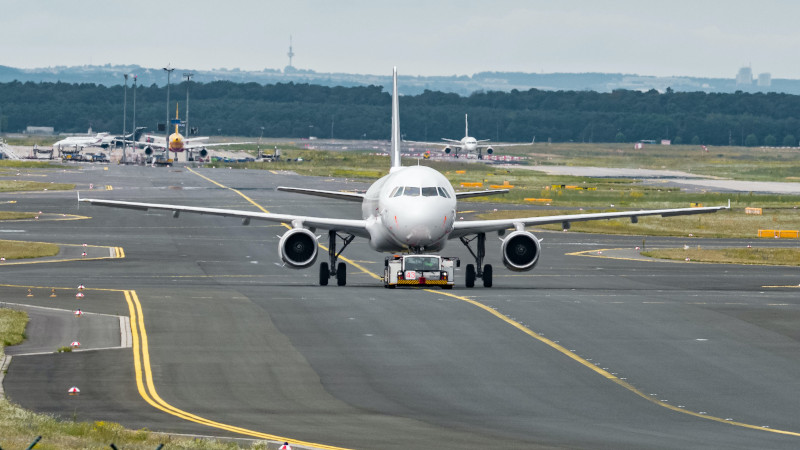The rough road to recovery
September 18, 2023 by Eric Bradley
According to data1 sourced from the World
Economic Forum (WEF), at its lowest point, the global
aviation industry had accrued losses of 4.5 trillion
dollars, and almost 63 million employees lost their
jobs due to the effect of the Covid-19 pandemic.
Since the pandemic has faded away, international borders
have been reopened and tourists are eager to get back in
the air.

We might need more than just a bandaid
Ordinarily, this resurgence would indicate boom times
ahead for the industry. In the short term, everything
seems to be fine, but it is a superficial healing that
is taking place. In the long term view, the patient may
still succumb to devastating internal injuries that are
hidden from sight.
Obstacles to recovery include:
-
Replacing 63 million people is not an easy task. You
might expect that people who were forced to leave
the industry would simply return when the pandemic
was over, but many of them entered into new
contracted roles outside the industry and can't
return. This is just one of many reasons why former
airline workers are not returning to their old jobs.
-
Fuel prices remain high, but customers have become
accustomed to low fares. Every airline that has
attempted to raise fares in order to cover costs has
paid a high price for doing so, because the industry
became too competitive when things were going well.
-
Demand for air travel is predicted to increase by
100% within the next five years. While this rapid
expansion would normally be a good thing, it is
happening at a time when pilots are retiring faster
than they can be replaced.
Remedies available
The good news is that the recovery phase doesn't
necessarily need to be painful. There are plenty of
positives we can grab onto, and provided the industry
can rise to meet the challenges ahead, the prognosis
is one of hope.
Some airlines are already making great progess in
addressing the problems mentioned previously. For
example, to solve the pilot shortage, airlines have
increased pilot salaries to help retain and attract
experienced Captains, while simultaneously reducing
academic qualification requirements for newly hired
First Officers.
Of course moves like these are the very definition of
"bandaid solutions", and though they are
very positive moves, the extra money that needs to be
spent to accommodate them means sacrifices will need to
be made in other areas of the business. That could mean
fewer unskilled jobs, reduced service quality, or other
problems.
Now that there are enough provisions in place to take
care of the short term, we should turn attention to
finding sustainable long term solutions to help keep the
industry strong and growing.
Here are some suggestions to get us started:
-
Avoid the temptation to chisel. We must never lose
sight of the fact that travel is a service based
business. Customers choose which airline to fly
based on perception of the value the airline
delivers. This is where cabin crew have a chance to
shine. Treat the customer like a king, and he may
not notice quite so much how his legs are crammed
into an economy class seat.
-
Focus on collecting genuinely useful feedback. Few
people enjoy being the bearer of bad news, so survey
questions that just ask for ratings will generally
tend to receive overly generous responses. This
helps nobody. Survey questions should focus on how
service could be improved to make the experience
better for the customer. This way you will collect
genuinely helpful suggestions so you can improve
service and tailor the customer experience closer to
what is expected, instead of just getting undeserved
accolades that lead to false perceptions.
-
Follow the money. Sometimes the simplest business
rules are the best. Look at where you are making the
most profit and give extra attention to it. You
don't need to cover every route. Regionals will be
happy to snap up that business opportunity. And if
a competitor takes over the route, you know in
advance they won't profit from it. If they do profit
from taking over a route you've abandoned, it gives
you an opportunity to study what they're doing
differently so you can apply the lesson to the rest
of your business.
Key Performance Indicators
IATA data indicates the industry is currently in a
stable position, with revenues above pre-pandemic levels
for both passengers and freight2.
This good news is offset by the rising cost of fuel,
a situation that has not been helped by escalating
tensions in the Middle East and the outbreak of war in
Eastern Europe.
Even with the expenses of high fuel costs, the amount
being spent on fuel is still significantly less than
half the amount of revenue flowing in. This indicates
we can expect to see continued profit growth provided
that no further disruptions occur.
The indication suggested by the data is that the key to
improvement is to focus on investment into technologies
that will help alleviate the pain of high fuel prices.
Innovations in aircraft design, engine efficiency, and
fuel technology have the potential to significantly
reduce a major pain point for the industry. A
potential bonus of innovation in these areas is that it
may help reduce concerns about the environmental impacts
of air travel, which can be regarded as a win for
everyone.